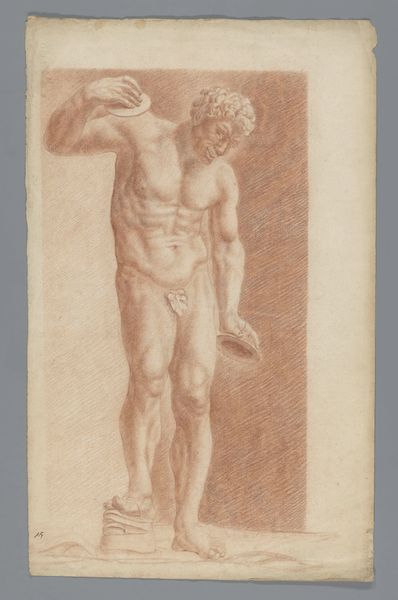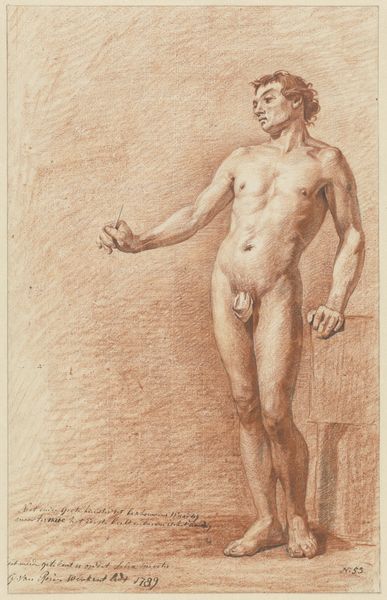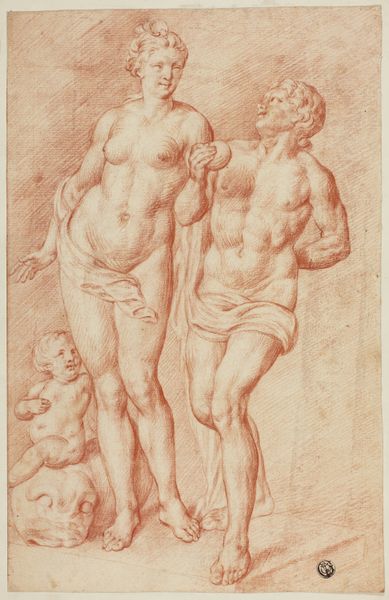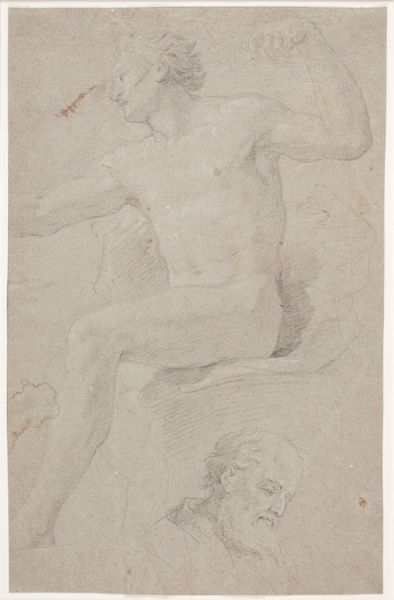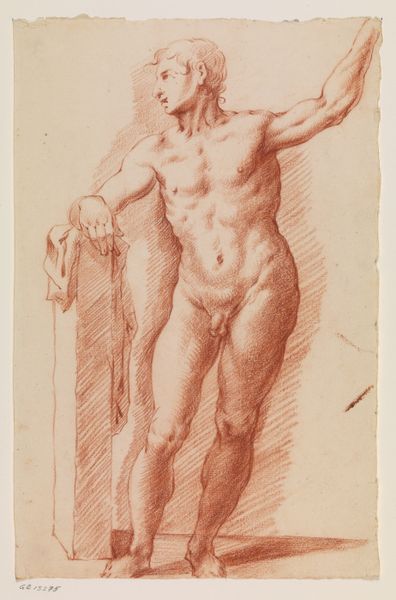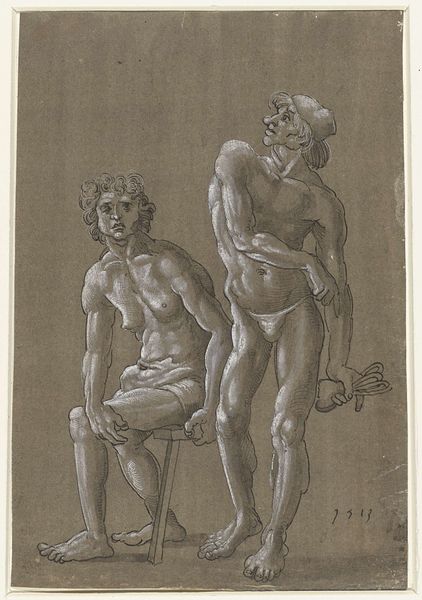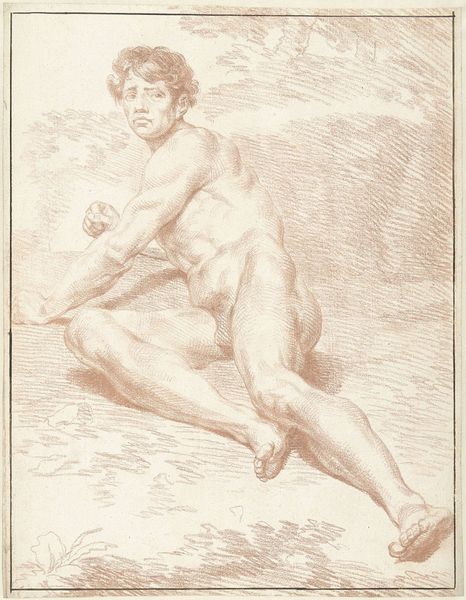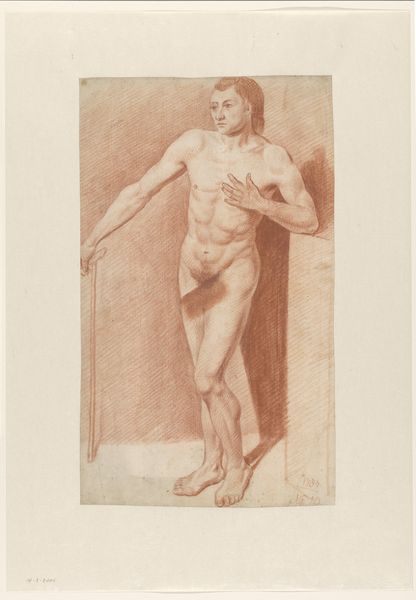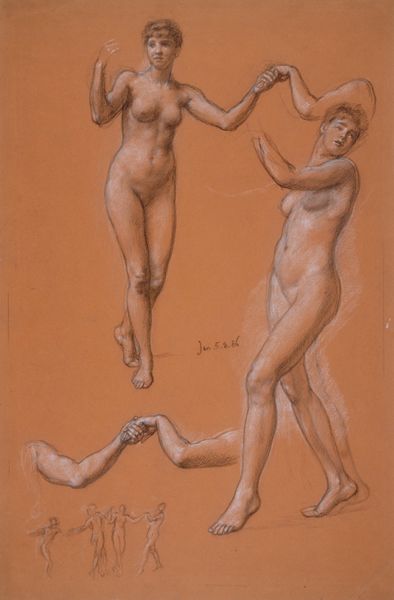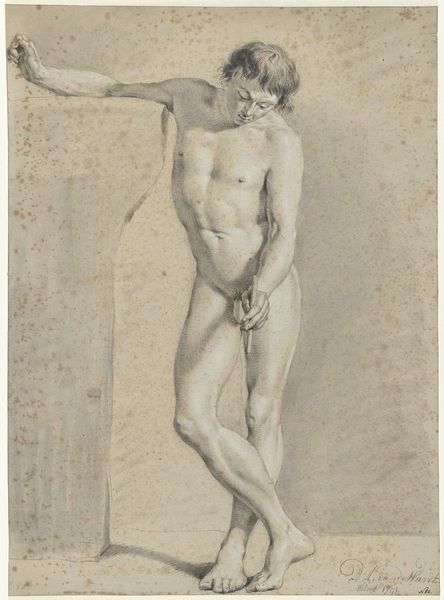
drawing, paper, pencil
#
drawing
#
self-portrait
#
pencil sketch
#
paper
#
pencil drawing
#
romanticism
#
pencil
#
history-painting
#
academic-art
#
nude
Dimensions: overall: 35.6 x 26.3 cm (14 x 10 3/8 in.)
Copyright: National Gallery of Art: CC0 1.0
Editor: This drawing, "Orpheus and Eurydice" by Edward Burne-Jones, is rendered in pencil on paper. The sepia tone lends the piece a wistful air, almost as if we're looking at a faded memory. The raw materiality and exposed pencil marks are particularly evocative. What do you see in it? Curator: I see the limitations and possibilities inherent in the Pre-Raphaelite aesthetic and its relationship to labor. The very act of drawing, the physical exertion required to render these figures, becomes paramount. What does the repetitive hatching tell us about Burne-Jones' studio practice, his daily grind? Also, what societal factors drove Burne-Jones toward working on paper with pencil as opposed to larger more traditionally prestigious material. Editor: That’s interesting! So you’re focusing not just on what's depicted, but on the physical act of creation and the labor that went into it? Curator: Exactly! Consider the sourcing of materials. Where did this paper come from? Who manufactured the pencils? These are not neutral objects. The commodification of art supplies, and Burne-Jones' choices within that system, directly influence the final image. It isn't just about mythology or beauty. Editor: That hadn't occurred to me. Looking at it again, the seeming fragility of the medium, pencil on paper, almost underscores the ephemeral nature of the myth itself, made more precious, rather than grand in oil. Curator: Precisely! How does this "fragility," as you put it, engage with the consumption habits of Burne-Jones' patrons? Were they purchasing fleeting beauty or an idea of handcrafted authenticity within an increasingly industrialized world? What stories would that make for? Editor: This definitely shifts my perception of the piece. I now appreciate how the humble materials and process are crucial to understanding its deeper meaning and social context, rather than just as a romantic image. Curator: Indeed. Seeing art through a materialist lens invites us to ask probing questions about labor, value, and the economic forces that shape artistic production, then and now.
Comments
No comments
Be the first to comment and join the conversation on the ultimate creative platform.
